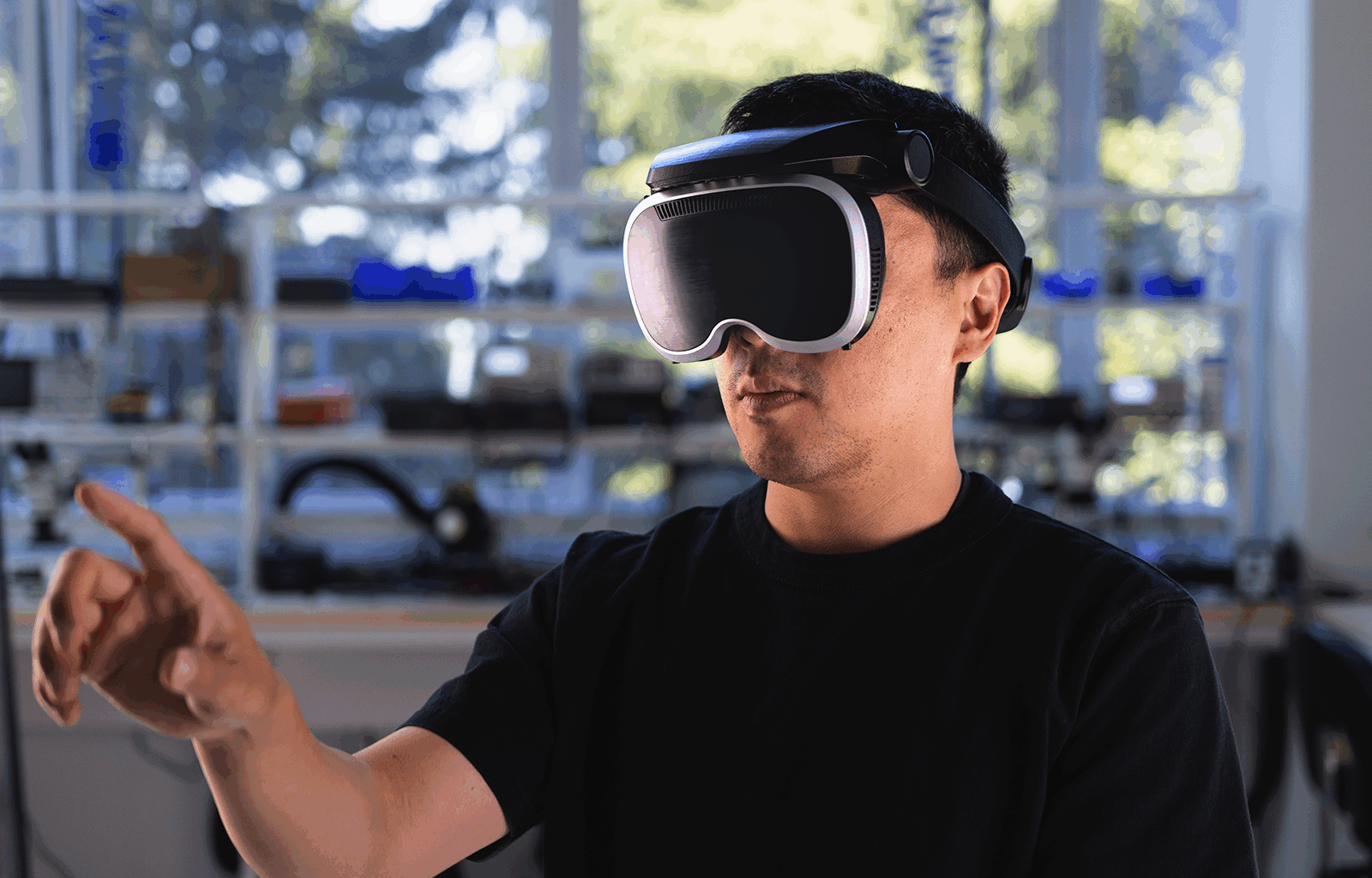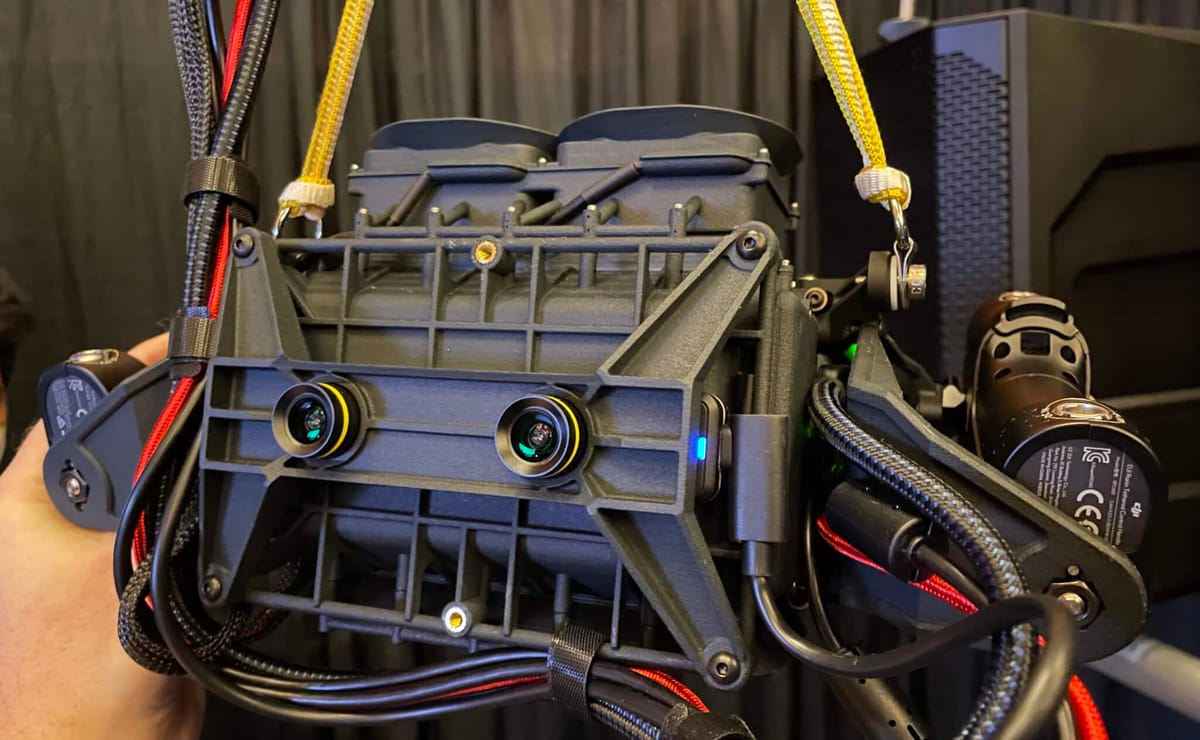Meta shared more details about its Boba 3 ultra-wide FOV VR & MR prototypes, as well as a “hyperrealistic VR” prototype called Tiramisu.
Meta Shows Off Practical Ultra-Wide Field Of View Headset Prototypes
Meta built two prototype headsets with 180°×120° field of view in a comparable form factor to today’s Quests, and will demo them at SIGGRAPH 2025.
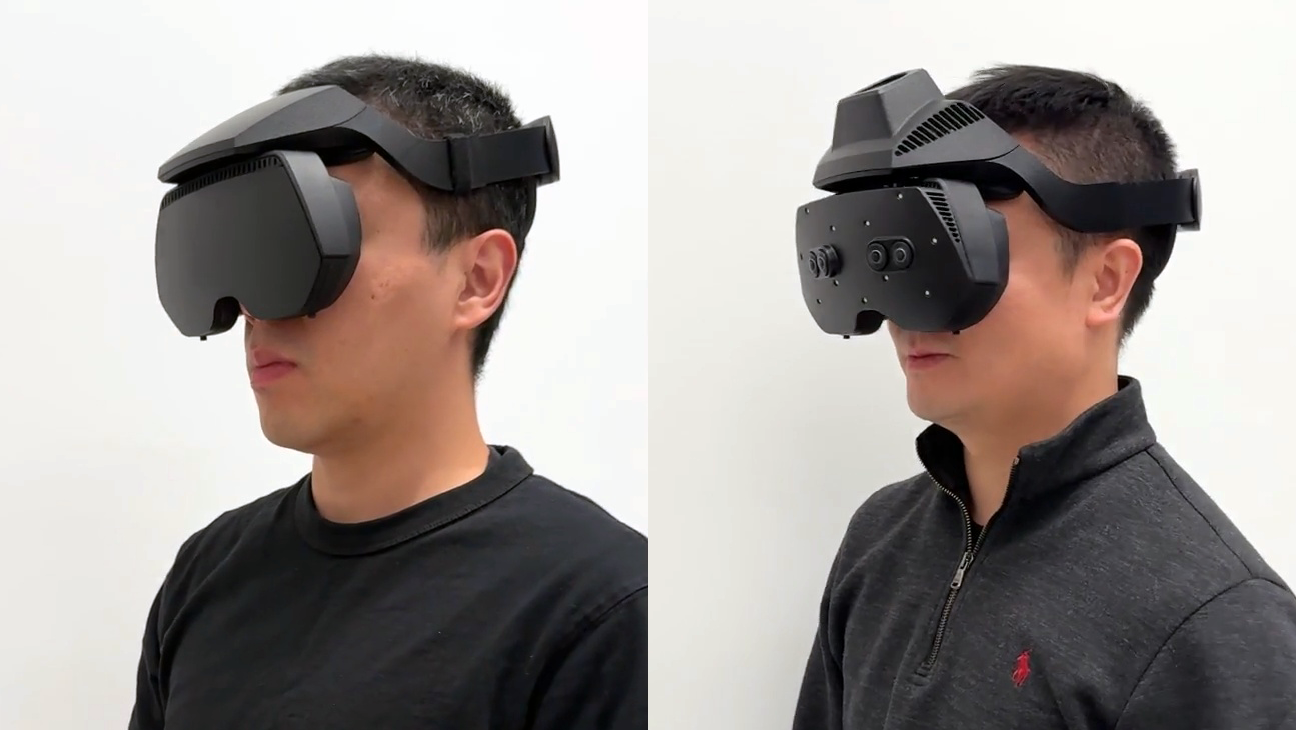
If you missed it, last month Meta researchers revealed three prototype headsets across two paper abstracts.
One paper is from Display Systems Research (DSR) team. It’s called ‘Wide Field-of-View Mixed Reality’, and presents VR and mixed reality variants of a headset design with ultra-wide field of view in a comparable form factor to today’s Quests.
The other paper is from Meta’s Optics, Photonics, and Light Systems (OPALS) team, and is called “Hyperrealistic VR: A 90-PPD, 1400-Nit, High-Contrast Headset”. OPALS say they’ve combined above-retinal resolution with high brightness and high contrast for the first time, a combination they claim achieves “a new milestone on how realistic VR experiences can be”.
The full papers are set to be published just before SIGGRAPH 2025 next week, the conference where Meta will demo all three headsets to attendees.
UploadVR will be at SIGGRAPH 2025, and we plan to go hands-on with all three headsets to bring you our impressions.
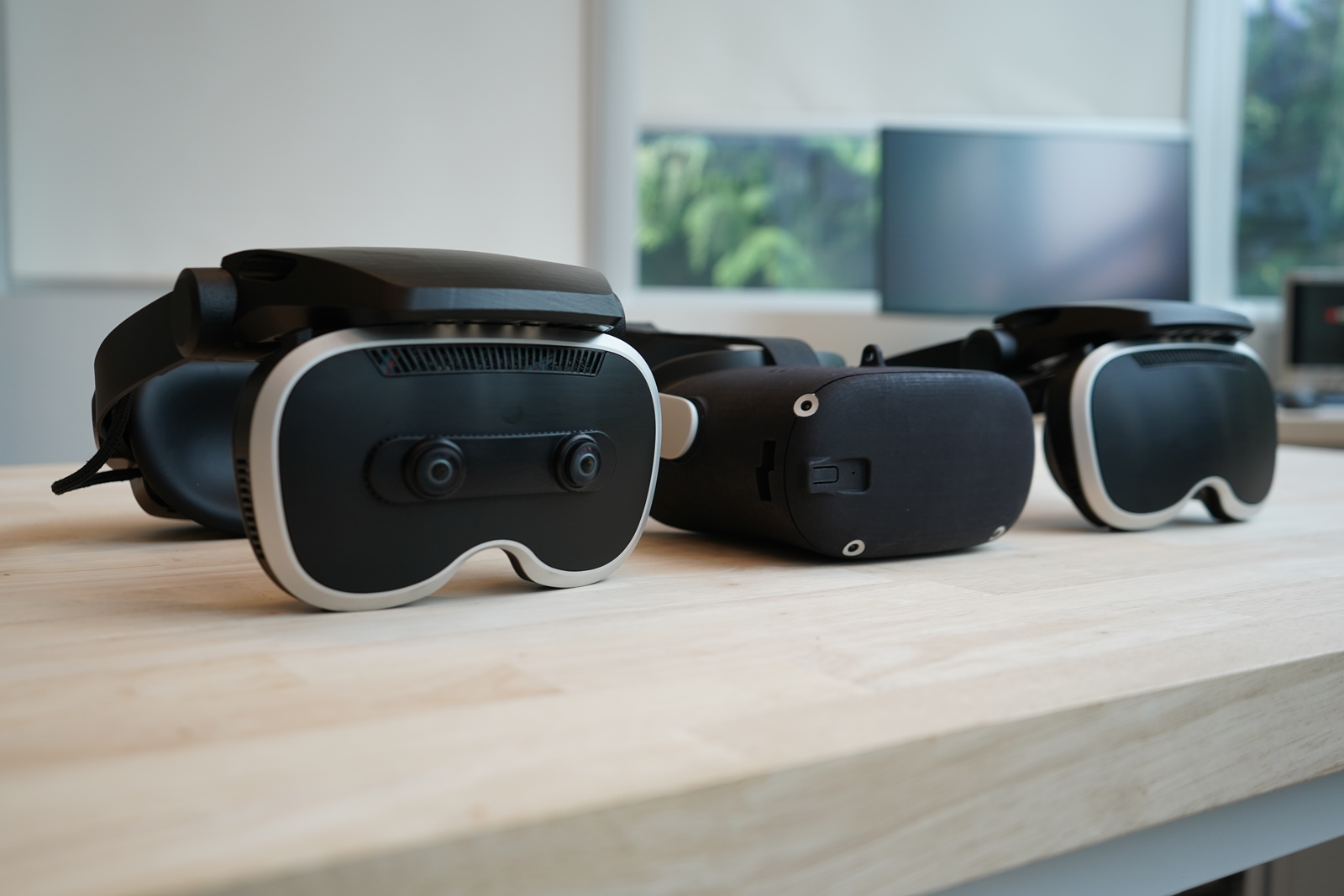 Boba 3, Tiramisu, and Boba 3 VR.
Boba 3, Tiramisu, and Boba 3 VR.
Now, Meta has revealed the names and key details of these three prototype headsets, in a blog post that includes quotes from key members of the DSR and OPALS teams.
Boba 3: Ultra-Wide Field Of View VR & MR
It turns out the practical ultra-wide field of view headset shown visually in the abstract was called Boba 2, and that Meta is actually presenting a sleeker and higher resolution called Boba 3 at SIGGRAPH.
Boba 3 achieves a 180° horizontal by 120° vertical field of view.
“Boba 3 feels like breaking through to the next level of immersion, opening up the periphery and showing off what you didn’t even know was missing.”
For comparison, Quest 3 has a field of view of less than 110° × 96°, while Quest 3S has less than 96° × 96°, and human vision is very roughly 200° × 135°, depending on the shape of a person’s face.
In simpler terms, Meta claims Boba 3 covers roughly 90% of human field of view, compared to 46% for Quest 3.
Meta’s Boba 3 practical ultra-wide field of view headset prototype.
Progress on achieving practical ultra-wide field of view comes after a decade of stagnation on this front.
Back in 2018 DSR showed off the original Half-Dome headset which, as well as having varifocal optics, had a field of view of 140°. Subsequent versions of Half-Dome had a smaller field of view, however, with Half-Dome 2 focusing on compactness and Half-Dome 3 moving to an electronic varifocal approach with no moving parts.
Until recently, we hadn’t seen any Meta prototype with a wide field of view again at all. Then, in October 2024, Meta CTO Andrew Bosworth shared a photo of himself holding a headset with a very wide curved body, suggesting an ultra-wide field of view. He later said that it had a horizontal field of view of around 210°, but repeated his long-standing view that an ultra-wide field of view isn’t worth the tradeoffs on “weight, form factor, compute, and thermals”.
 Boba 1 (2016), Boba 2 (2024), and Boba 3 (2025)
Boba 1 (2016), Boba 2 (2024), and Boba 3 (2025)
Meta now says this prototype was called Boba 1, and had a display and optics stack from “about nine years ago”.
Boba 1 had 2K×1K per-eye resolution, according to the company, and it seems ultra-wide field of view took a back seat until last year, when Boba 2 arrived with 3K×3K.
Boba 3, the headset being demoed at SIGGRAPH this year, has a resolution of 4K×4K per eye, which Meta says can finally deliver sufficient central angular resolution to make ultra-wide field of view viable.
Specifically, Boba 3 has a central angular resolution of 30 pixels per degree (PPD), compared to 25 PPD for Quest 3. For reference, human retinal resolution is generally considered to be 60 PPD.
Meta’s walkthrough of Boba 3.
But as we noted when covering the abstract, what makes Boba 3 truly fascinating is that it achieves the ultra-wide field of view without the form factor tradeoff seen in every other attempt to date, including Boba 1 and the original Pimax headsets.
Meta says the mixed reality Boba 3 variant with passthrough weighs 840 grams, while Boba 3 VR without passthrough weighs 660 grams.
Given that these figures include the rigid plastic strap, they should be compared to Quest 3 with the Elite Strap: 698 grams.
“It’s something that we wanted to send out into the world as soon as possible, but it’s not for everyone,” DSR Optical Scientist Yang Zhao notes.
“It’s not going to easily hit a mass-market price point. And it requires a top-of-the-line GPU and PC system.”
Meta says achieving the ultra-wide field of view without significantly increasing weight and bulk is possible thanks to “a custom optical design leveraging high-curvature reflective polarizers”. The design builds on its decade-long investment in pancake lenses, the company says, and leverages displays that are already in mass production.
Thus, it sounds like Meta could theoretically ship Boba 3 as a product if it really wanted to. But it wouldn’t be cheap, and it would require a high-end gaming PC to drive a viable angular resolution for a field of view that large.
Tiramisu: “Ultrarealistic VR”
The headset that combines above-retinal resolution with high brightness and high contrast is called Tiramisu, and it comes from Meta’s Optics, Photonics, and Light Systems (OPALS) team, a “sister team” of DSR.
Meta has shown retinal resolution before in one headset, and ultra-high brightness and contrast in another, proving the perceptual benefits of each. UploadVR has even gone eyes-in with both headsets. But what makes Tiramisu special is that it has all three qualities in one headset.
Starburst: Eyes-In With Meta’s 20K Nit HDR Display Tech
Is high-dynamic range (HDR) the key to next generation VR displays? Hands-on time with Meta’s latest demo and an interview with the head of display systems research suggests it’ll be pretty key. Read on for details. At the recent SIGGRAPH conference in Vancouver David Heaney and I went
Hands-On: Meta’s Retinal Resolution Varifocal Prototype
We tried Meta’s Butterscotch Varifocal prototype which has dynamic focus, retinal resolution, and dynamic distortion correction. Read our impressions here:

Meta says Tiramisu has 3.6x the central angular resolution of Quest 3, 14x the brightness, and 3x the contrast.
Specifically, Tiramisu has a central angular resolution of 90 PPD and brightness of 1400 nits. That compares to 25 PPD and just 100 nits for Quest 3. And again, for reference, human retinal resolution is generally considered to be 60 PPD.
For the demo, Meta is using “the best real-time graphics that Unreal Engine 5 can produce”, including Nvidia’s DLSS 3 neural upscaling, so that the software side also provides “hyperrealistic” visuals.
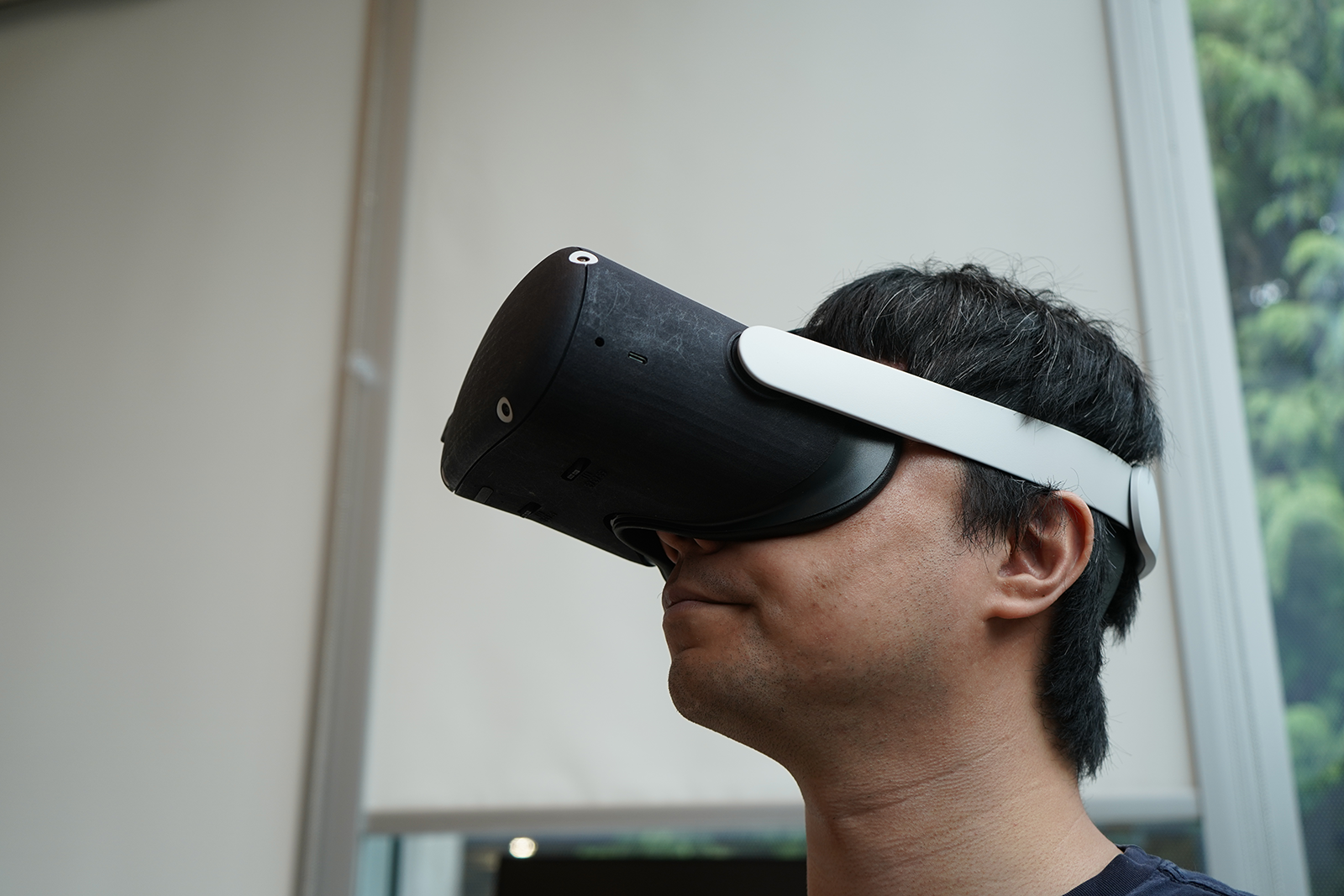 Meta’s Tiramisu “hyperrealistic VR” prototype headset.
Meta’s Tiramisu “hyperrealistic VR” prototype headset.
However, Tiramisu makes a lot of sacrifices to achieve what Meta describes as “a new milestone for realism in VR”.
The headset has a field of view of just 33° x 33°, a comically large form factor, and uses heavy and expensive glass lenses.
But like its Orion AR glasses prototype, Meta describes Tiramisu as “a time machine”. Its purpose is to research the feeling of hyperrealistic VR, and this will inform the company’s priorities for future headset products.
Meta’s walkthrough of Tiramisu.
It’s a key step towards Meta’s stated aim of one day passing the “Visual Turing Test”, wherein you’d be unable to tell whether you were wearing safety goggles or an XR headset.
“Tiramisu isn’t something you can really understand just by reading an abstract,” says DSR Director Douglas Lanman.
“It really is like the first time you see 4K TV or an HDR TV, or the first time you go on a really immersive theme park ride that sprays water in your face. It’s something new, and it’s hard to understand this combination of numbers on a page really feeling different. Honestly, it’s the first headset in a while that really gives me a sense of wonder. It’s the most realistic VR image I’ve seen yet, with very impressive specs that add up to something that does look more realistic than anything we’ve seen in VR before.”

